How to Find Micro-Influencers: Your Guide To Influencer Marketing
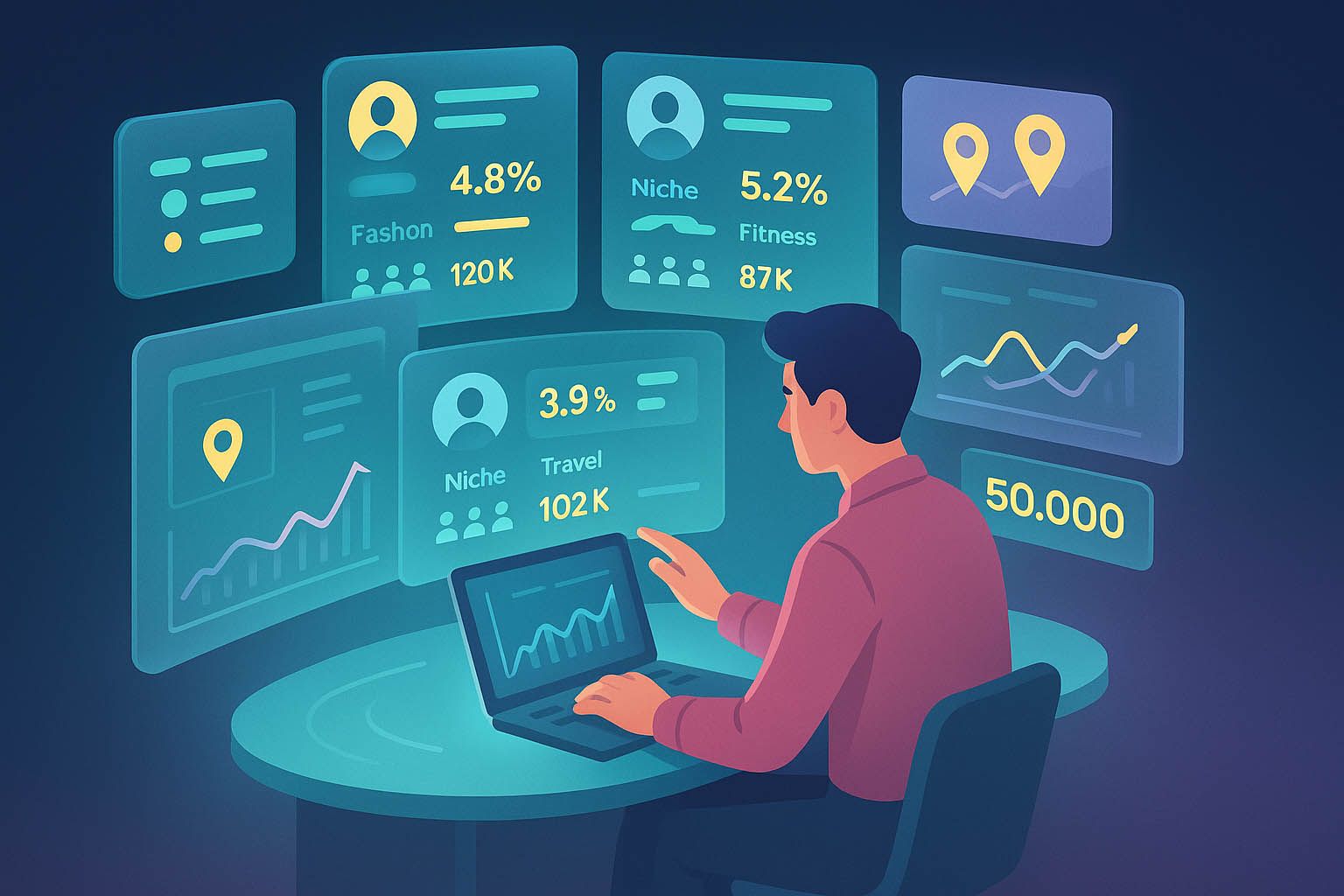
Micro-influencers have become the backbone of successful influencer marketing campaigns, delivering authentic connections and impressive returns that big influencers often can't match. While celebrity influencers command millions of followers, micro-influencers typically maintain 1,000 to 100,000 social media followers and offer something far more valuable: genuine audience engagement and trust.
Micro-influencers generate 60% higher engagement rates compared to macro-influencers, making them essential partners for brands seeking authentic connections with niche audiences. This comprehensive guide reveals proven strategies to find micro influencers who align with your brand values and can amplify your marketing efforts effectively.
Why Micro-Influencers Outperform Big Influencers
The influencer marketing industry has evolved significantly, with micro-influencers emerging as powerful content creators who bridge the gap between relatability and reach. Unlike larger influencers who may struggle with audience authenticity, micro-influencers often maintain closer relationships with their followers, resulting in higher conversion rates and more impactful brand partnerships.
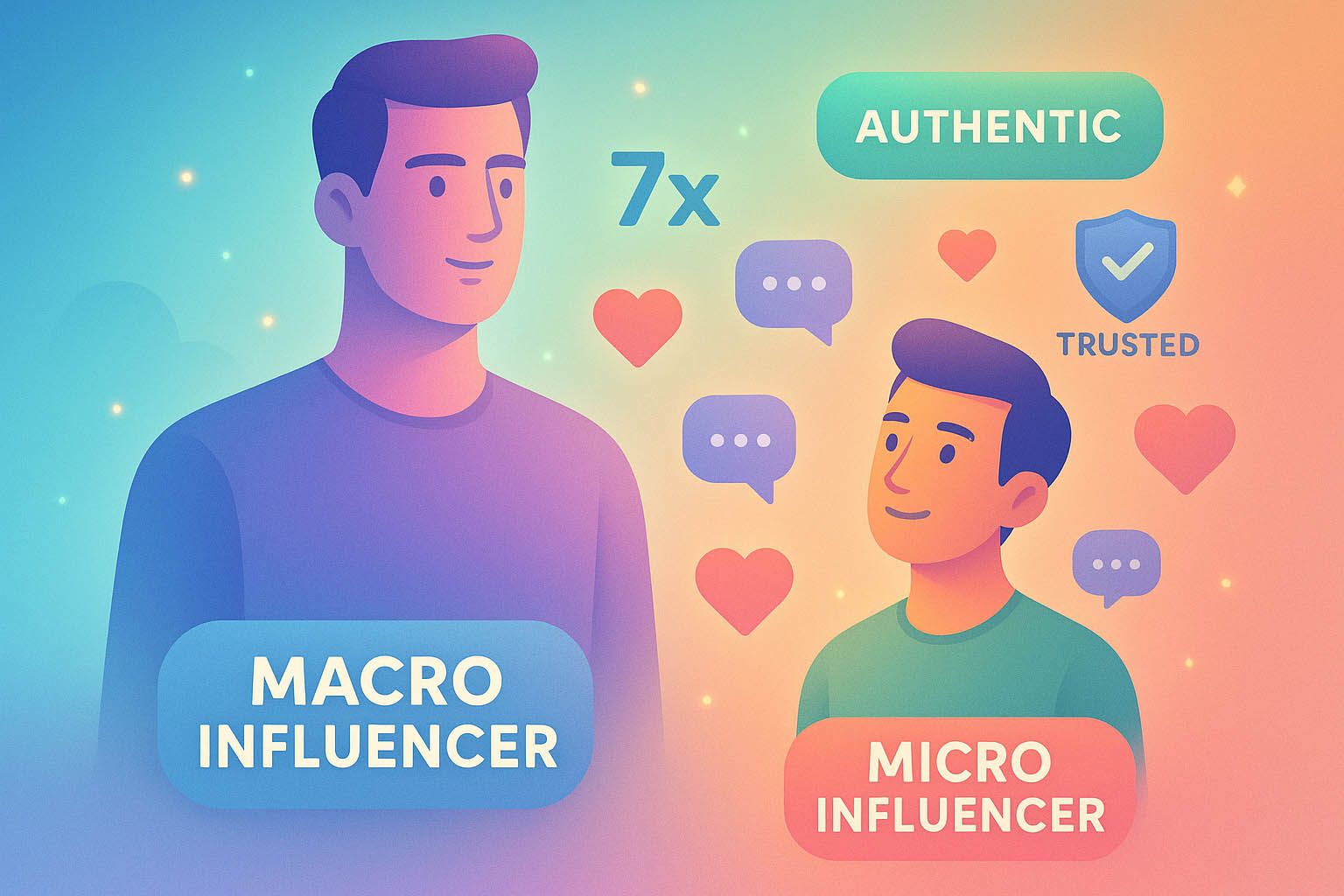
Data from recent influencer campaigns shows that micro-influencers may generate up to 7x more engagement per post compared to celebrity influencers. This enhanced performance stems from their focused social media presence within specific niches, allowing brands to target precisely defined audience segments. Understanding Micro-Influencer Marketing ROI
The financial advantages of partnering with micro-influencers extend beyond lower collaboration costs. These content creators typically charge 10-20% less than macro-influencers while delivering superior engagement metrics. For brands operating with limited marketing budgets, this combination of affordability and effectiveness makes micro-influencer campaigns particularly attractive.
Marketing professionals report that micro-influencer partnerships often yield 3-4x better ROI compared to traditional advertising methods, primarily due to the authentic user-generated content (UGC) these collaborations produce.
Strategic Methods to Find Micro-Influencers for Your Brand
1. Leveraging Google Search to Identify Niche Influencers
Google remains a powerful tool for discovering micro-influencers who have established authority within specific industries. The key lies in using targeted search strings that reveal influencers who create relevant content for your target market.

Effective Search Strategies:
-
Use location-specific queries: "Best [your niche] influencers in [target city]"
-
Search for industry-specific content: "[Product category] reviewers" or "[Service type] experts"
-
Look for roundup posts: "Top [niche] influencers to follow"
When evaluating search results, focus on identifying genuine content creators rather than commercial websites. Look for personal blogs, portfolio sites, and media kit pages that indicate active influencer marketing participation.
Pro Tip: Examine the influencer's content quality and posting consistency before reaching out. High-quality, regular content often correlates with engaged audiences and professional collaboration standards.
2. YouTube: Mining Video Content for Authentic Micro-Influencers
YouTube's algorithm makes it particularly effective for finding micro-influencers who produce engaging video content. The platform's search functionality allows for precise targeting based on content topics, audience size, and engagement levels.
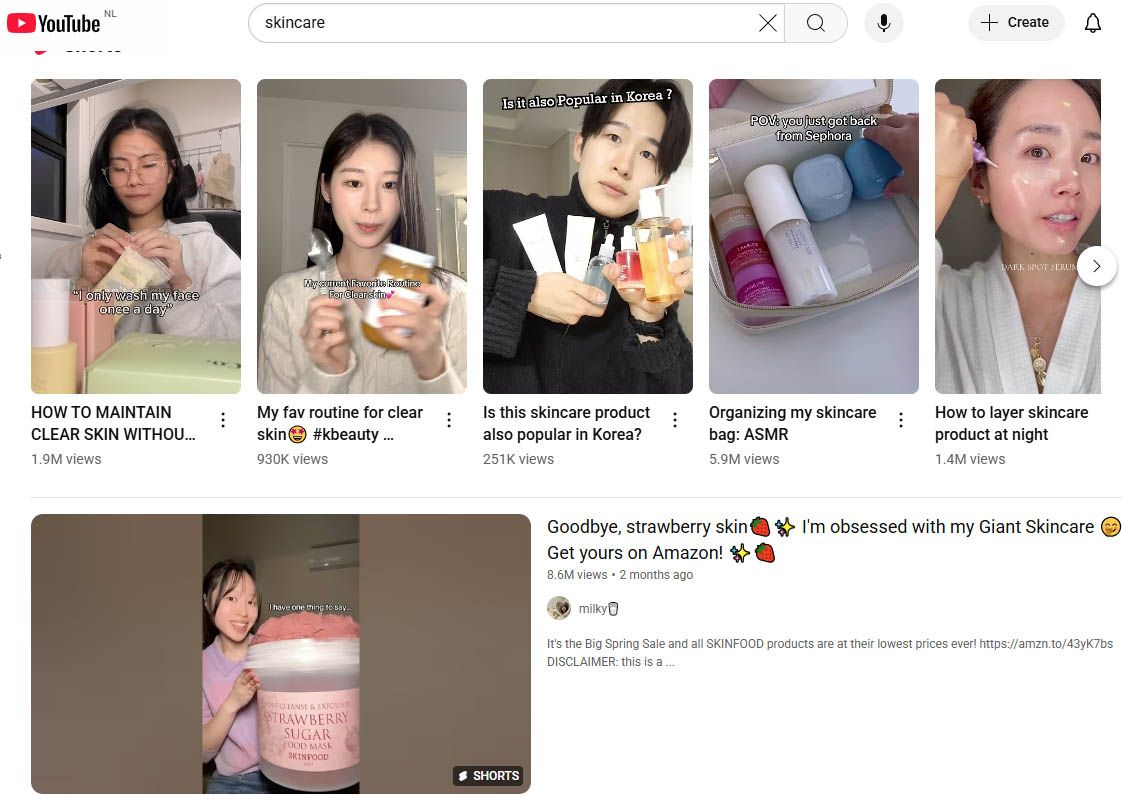
YouTube Discovery Techniques:
-
Search using specific product or service keywords
-
Filter results by upload date to find currently active creators
-
Analyze comment sections to gauge audience engagement quality
-
Review subscriber counts and video view ratios
Video content creators often demonstrate higher engagement rates because their audience investment requires more time and attention compared to static social media posts. This deeper engagement translates to more meaningful brand partnerships and better campaign outcomes.
3. Social Media Platforms: Instagram and TikTok Micro-Influencer Research
Social media platforms offer built-in discovery tools that can help identify relevant micro-influencers within your industry. Each platform requires slightly different approaches due to varying algorithms and user behaviors.
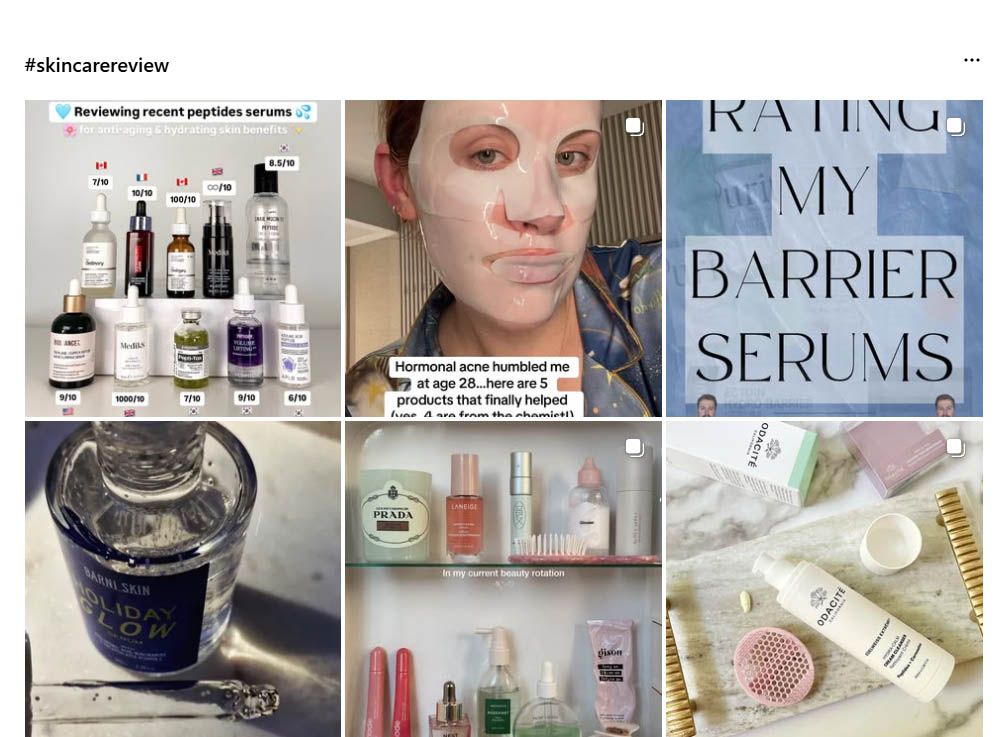
Instagram Micro-Influencer Discovery
Instagram's visual nature makes it ideal for product-focused influencer campaigns. The platform's hashtag system provides multiple pathways to find influencers who create content aligned with your brand.
Instagram Research Methods:
-
Analyze Your Existing Followers: Review your current follower list to identify accounts with micro-influencer characteristics (1K-100K followers, high engagement rates, relevant content)
-
Hashtag Research: Search industry-specific hashtags to discover content creators who regularly post about your niche
-
Location-Based Discovery: Use Instagram's location features to find local micro-influencers for geographically targeted campaigns
-
Competitor Analysis: Study accounts that follow or engage with your competitors to identify potential brand ambassadors
TikTok Micro-Influencer Identification
TikTok's algorithm prioritizes content engagement over follower count, making it an excellent platform for discovering emerging micro-influencers with highly engaged audiences.
TikTok Discovery Approaches:
-
Search trending hashtags related to your industry
-
Monitor viral content within your niche to identify rising creators
-
Use TikTok's "Discover" tab to find content creators producing relevant videos
-
Analyze comment engagement to assess audience quality
4. Advanced Influencer Marketing Platforms and Tools
While manual research methods provide valuable insights, dedicated influencer marketing platforms streamline the discovery process and offer advanced analytics for better partner selection. These tools help avoid common pitfalls like fake followers and low engagement rates that can compromise campaign effectiveness.
Professional Influencer Discovery Tools
Modern influencer marketing platforms provide comprehensive databases with sophisticated filtering options that save time while improving selection accuracy. Features typically include:
-
Audience Demographics Analysis: Detailed insights into follower age, location, interests, and behavior patterns
-
Engagement Rate Calculations: Authentic engagement metrics that exclude bot interactions
-
Content Quality Assessment: Tools to evaluate posting consistency and content relevance
-
Collaboration History: Information about previous brand partnerships and campaign performance
Yoloco.io stands out as a comprehensive solution offering access to millions of verified micro-influencers across multiple filtering categories. The platform's advanced analytics help identify influencers with genuine audiences and high engagement rates, significantly reducing the risk of partnering with accounts that have fake followers or misaligned audience demographics.
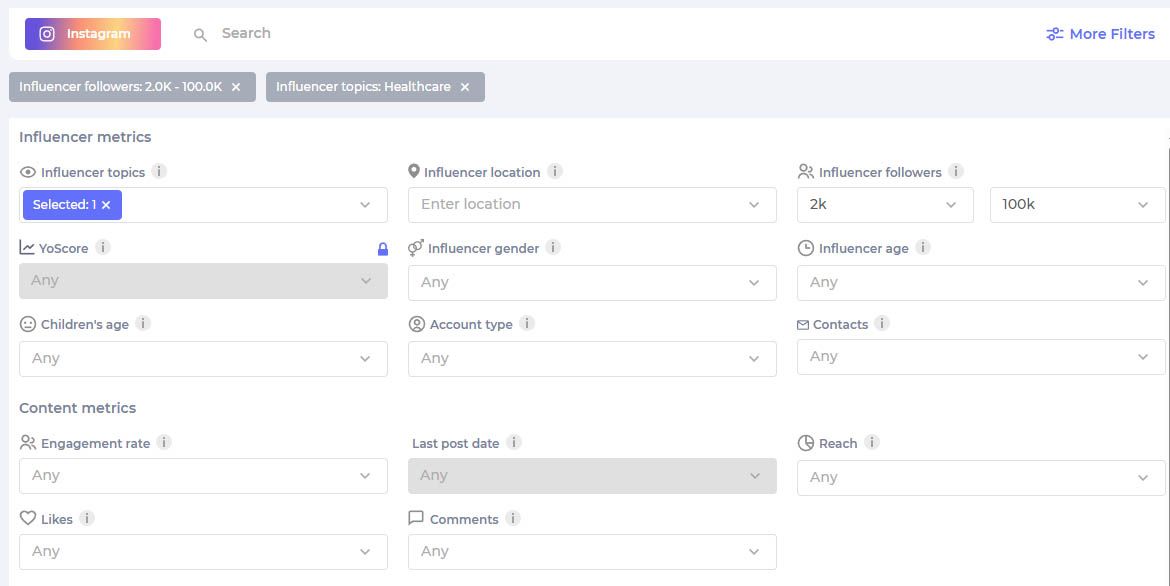
The platform's audience insights feature allows marketers to cross-analyze different influencers' audiences, ensuring optimal alignment between brand objectives and influencer capabilities. This level of analysis is particularly valuable for brands seeking to maximize their influencer marketing campaign effectiveness.
Essential Criteria for Selecting the Right Micro-Influencers
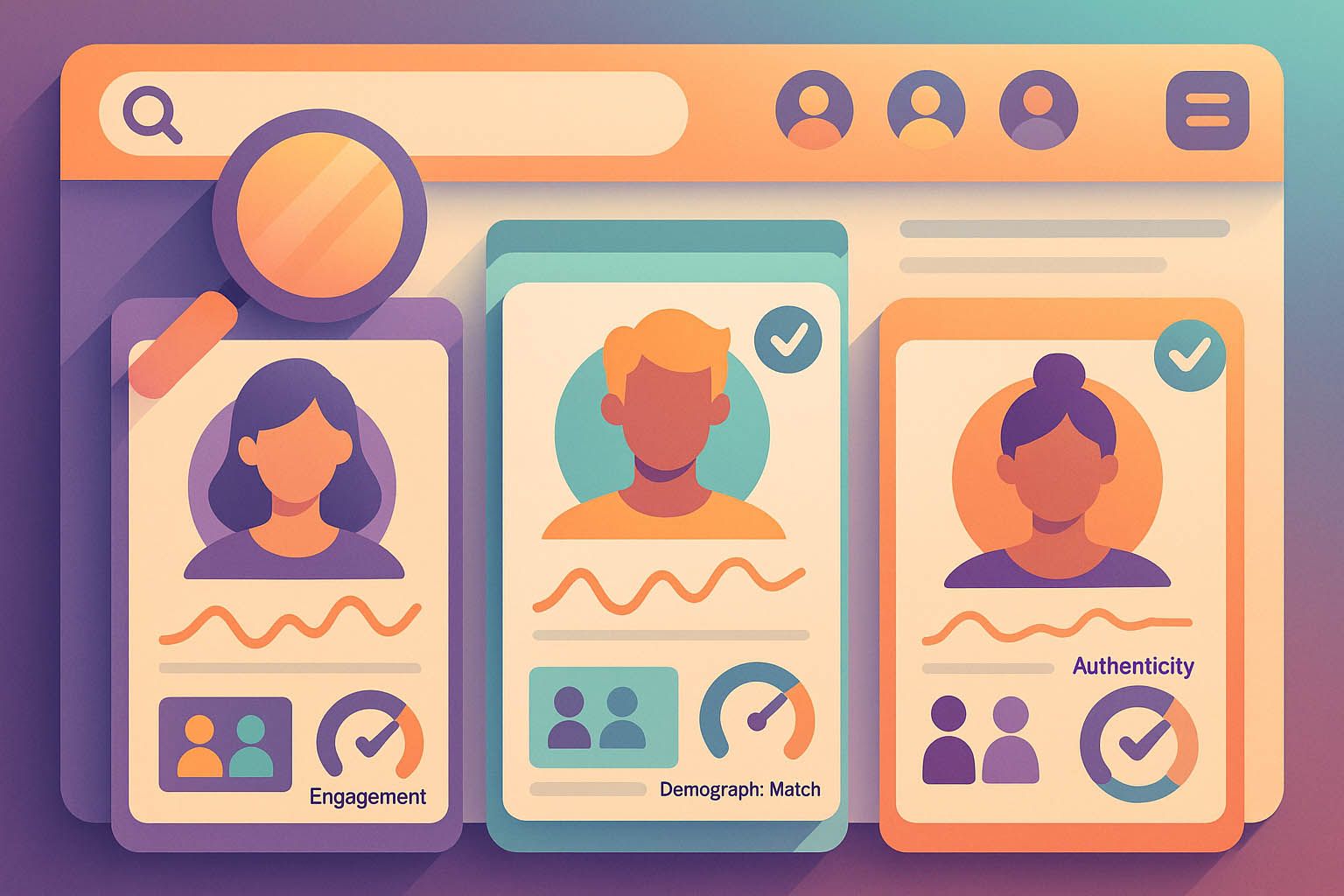
Choosing the right micro-influencers requires a data-driven approach focused on authentic engagement, audience compatibility, and content standards. Brands should evaluate not only engagement rates but also the quality of interactions, follower demographics, and posting consistency. Verified audience alignment with your customer profile is essential to drive conversions, while consistent, brand-safe content ensures professional representation across campaigns.
Evaluating Engagement Rate and Audience Quality
Engagement rate serves as the primary metric for assessing micro-influencer effectiveness. However, not all engagement is created equal. Focus on meaningful interactions like thoughtful comments, shares, and saves rather than simple likes.
Key Engagement Metrics:
-
Engagement Rate Formula: (Likes + Comments + Shares) ÷ Followers × 100
-
Comment Quality: Look for genuine conversations rather than generic responses
-
Audience Participation: Monitor how followers interact with the influencer's content
-
Content Saves and Shares: These actions indicate higher content value and audience trust
Research suggests that micro-influencers with engagement rates between 3-6% typically maintain authentic, engaged audiences. Rates significantly higher may indicate fake engagement, while lower rates might suggest declining audience interest.
Audience Demographics and Brand Alignment
Successful micro-influencer partnerships require precise audience alignment between the influencer's followers and your target customer demographics. Even highly engaged audiences won't convert if they don't match your ideal customer profile.
Audience Analysis Factors:
-
Geographic Location: Ensure followers are located in your target markets
-
Age and Gender Distribution: Match your customer demographics
-
Interest Categories: Verify audience interests align with your products or services
-
Purchase Behavior: Look for audiences that actively engage with brand content and promotions
Content Quality and Brand Safety
Content creators who maintain consistent, high-quality posting standards are more likely to represent your brand professionally. Review their content history to ensure alignment with your brand values and aesthetic preferences.
Content Evaluation Checklist:
-
Visual consistency and quality
-
Caption writing style and tone
-
Brand mention approach and authenticity
-
Frequency and timing of posts
-
Response to audience feedback and engagement
Micro-Influencer Outreach and Partnership Strategies

Crafting Effective Collaboration Proposals
Successful influencer outreach requires personalized communication that demonstrates genuine interest in the creator's work while clearly outlining partnership benefits. Outreach Best Practices:
-
Reference specific content pieces that impressed you
-
Explain why your brand aligns with their audience interests
-
Offer fair compensation that reflects their influence and effort
-
Provide clear campaign guidelines while allowing creative freedom
-
Include examples of successful past collaborations
Partnership Models and Compensation Structures
Micro-influencers typically work with more flexible partnership arrangements compared to celebrity influencers. Common collaboration models include:
Compensation Options:
-
Product Gifting: Suitable for lower-cost items and new relationship building
-
Flat Fee Payments: Professional standard for ongoing partnerships
-
Performance-Based Compensation: Commission structures tied to conversions or engagement
-
Long-term Brand Ambassador Programs: Ongoing relationships with multiple touchpoints
-
Studies indicate that 67% of micro-influencers prefer hybrid compensation combining products and monetary payment, creating win-win scenarios that benefit both parties.
Maximizing Campaign Performance with Micro-Influencers
Building effective partnerships with micro-influencers begins with personalized outreach and transparent communication. Tailored proposals that reflect the creator’s content style and audience interests increase response rates and trust. Successful collaborations balance clear campaign objectives with creative flexibility, supported by fair compensation models—ranging from gifting to hybrid payments—that reflect the influencer’s value and effort.
Campaign Planning and Content Strategy
Effective micro-influencer campaigns require strategic planning that leverages each creator's unique strengths while maintaining brand consistency across all touchpoints. Campaign Development Elements:
-
Content Themes: Develop cohesive messaging that works across different creator styles
-
Posting Schedules: Coordinate timing for maximum audience overlap and impact
-
Hashtag Strategies: Create branded hashtags while incorporating relevant community tags
-
User-Generated Content Integration: Plan how to repurpose influencer content across your own channels
Performance Tracking and Analytics
Measuring micro-influencer campaign success requires comprehensive tracking beyond basic engagement metrics. Advanced analytics help optimize future collaborations and demonstrate clear ROI. Key Performance Indicators:
-
Reach and Impressions: Total audience exposure across all participating influencers
-
Engagement Quality: Comments, saves, and shares indicating genuine interest
-
Website Traffic: Direct clicks and referral traffic from influencer content
-
Conversion Metrics: Sales, sign-ups, or other desired actions attributed to campaigns
-
Brand Awareness Lift: Surveys measuring brand recognition improvements
Avoiding Common Micro-Influencer Marketing Pitfalls
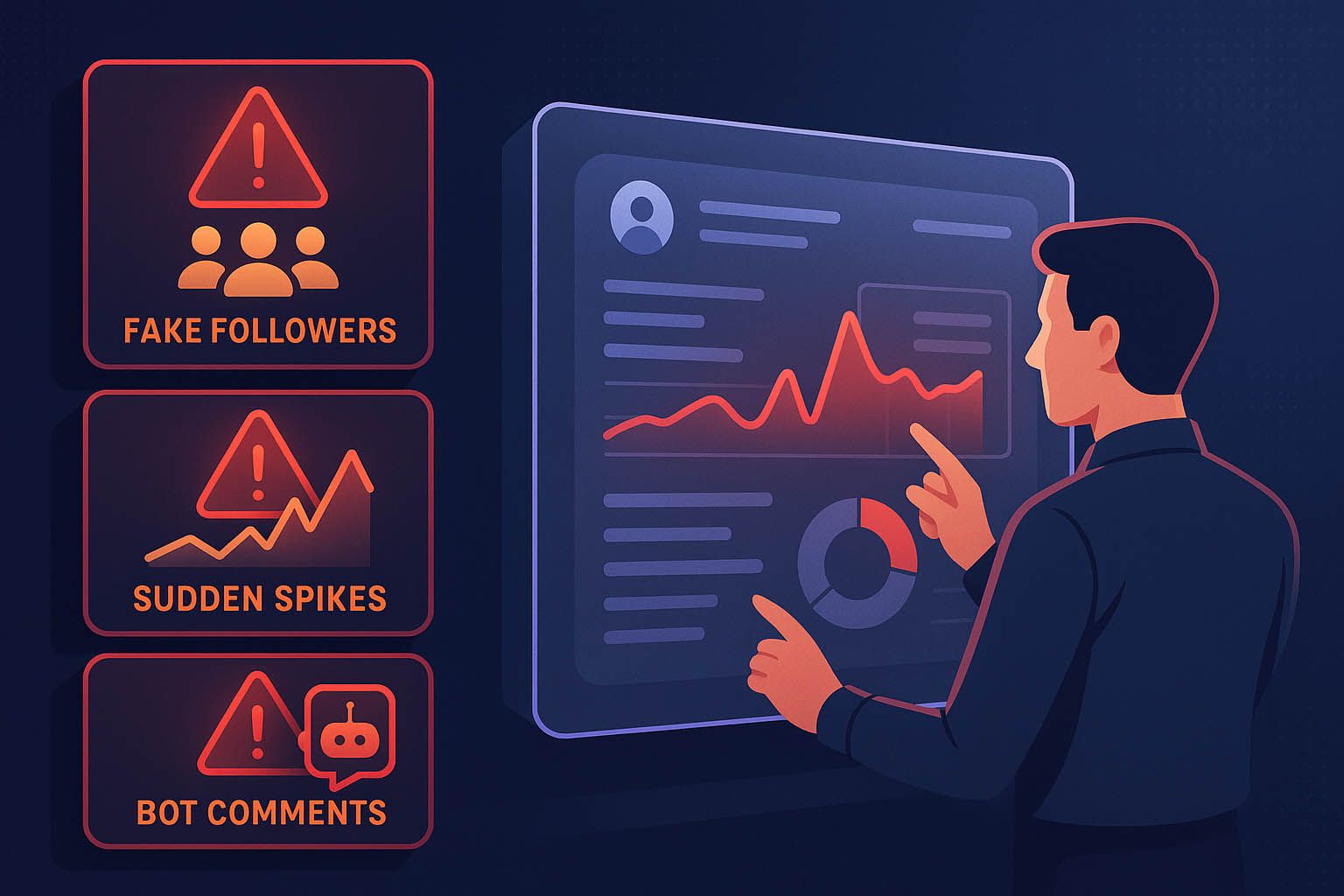
Identifying and Avoiding Fake Followers
The prevalence of fake followers represents a significant challenge in influencer marketing, potentially wasting marketing budgets and damaging brand credibility. Red Flags for Fake Engagement:
-
Sudden follower spikes without corresponding content quality improvements
-
Comments that seem generic or unrelated to post content
-
High follower counts with disproportionately low engagement rates
-
Audiences located in countries unrelated to the influencer's content language or focus
Verification Strategies:
-
Use analytical tools that detect suspicious account activity
-
Manually review recent followers for authentic profiles
-
Analyze comment patterns for repetitive or bot-like responses
-
Cross-reference engagement timing with typical audience active hours
Managing Expectations and Communication
Clear communication standards prevent misunderstandings and ensure successful long-term partnerships with micro-influencers. Communication Best Practices:
-
Establish response timeframes for both parties
-
Create detailed creative briefs while allowing interpretive freedom
-
Set clear deliverable expectations and deadlines
-
Provide feedback constructively and promptly
-
Maintain professional relationships that encourage future collaborations
Future-Proofing Your Micro-Influencer Strategy
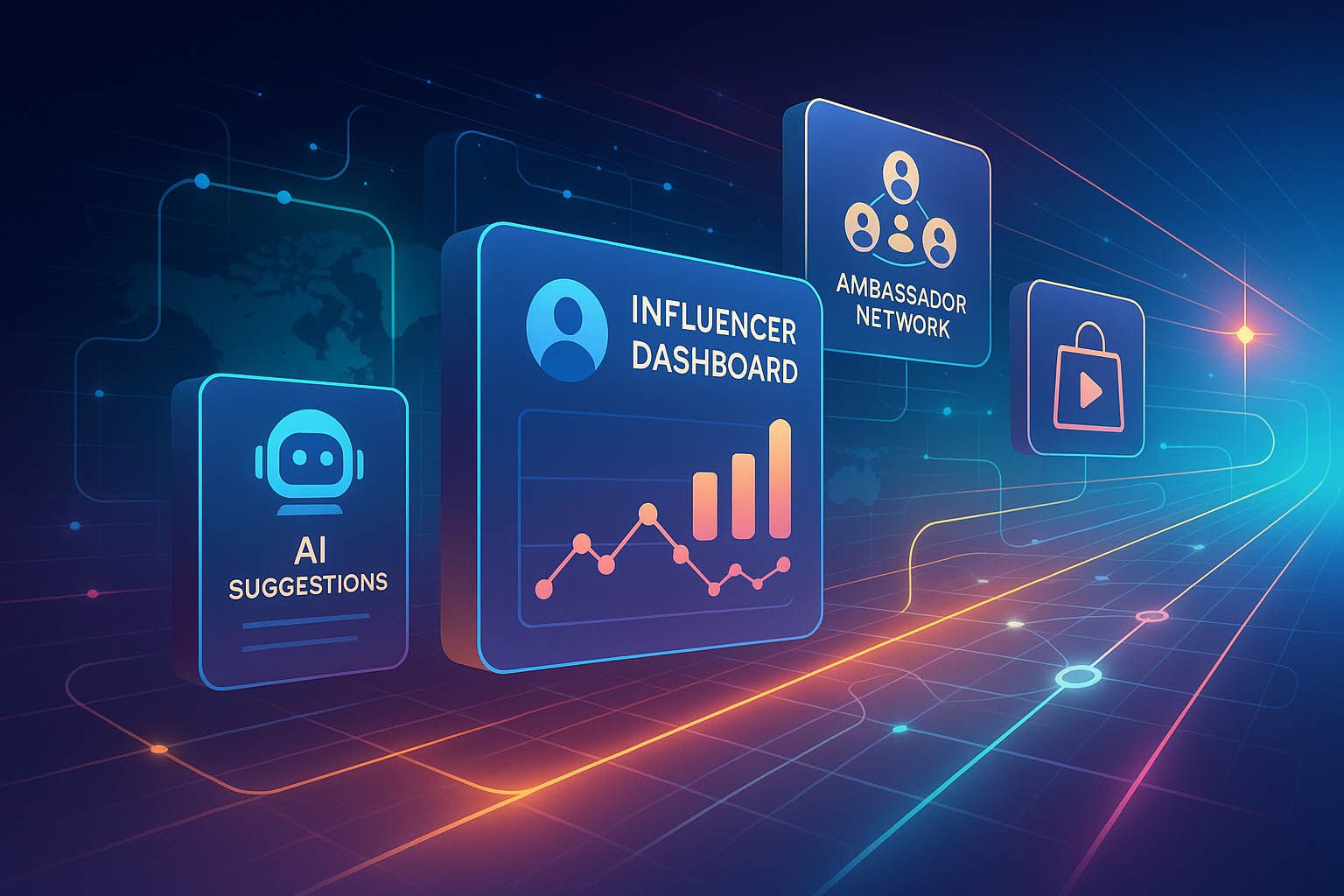
Emerging Trends in Micro-Influencer Marketing
The influencer marketing landscape continues evolving, with new platforms and technologies creating fresh opportunities for brand partnerships. Trending Developments:
-
AI-Powered Influencer Discovery: Tools using machine learning to identify optimal partnerships
-
Cross-Platform Campaigns: Integrated strategies leveraging multiple social media platforms simultaneously
-
Nano-Influencer Integration: Incorporating creators with 1K-10K followers for hyper-local targeting
-
Live Commerce Integration: Real-time shopping experiences during influencer streams and stories
Building Scalable Influencer Programs
Successful brands develop systematic approaches to micro-influencer partnerships that can grow alongside business expansion. Scalability Strategies:
-
Ambassador Program Development: Create structured programs that reward ongoing loyalty
-
Content Creator Networks: Build communities of preferred influencers for various campaign needs
-
Performance Database Maintenance: Track influencer performance data for future partnership decisions
-
Automated Outreach Systems: Implement tools that streamline initial contact and relationship management
-
Research indicates that brands with structured micro-influencer programs achieve 40% better campaign performance compared to ad-hoc partnership approaches.
Maximizing Your Micro-Influencer Marketing Success
Finding and partnering with the right micro-influencers requires strategic thinking, careful evaluation, and ongoing relationship management. These content creators offer unique advantages in today's crowded digital landscape, providing authentic connections with engaged audiences that can significantly impact your brand awareness and conversion rates.
The most successful brands approach micro-influencer marketing as a long-term strategy rather than isolated campaigns. By investing time in proper discovery, evaluation, and relationship building, you can create partnerships that deliver consistent value and support scalable business growth.
Whether you choose manual discovery methods or leverage professional platforms like Yoloco.io, the key lies in prioritizing authentic engagement over follower count and maintaining clear communication throughout your collaborations. With proper execution, micro-influencer partnerships can become one of your most effective and cost-efficient marketing channels.
FAQ On How To Find The Right Micro-Influencer
How much do micro-influencers typically charge for brand partnerships? Much do micro-influencers charge varies significantly based on their follower count, engagement rate, and content type. Generally, micro-influencers with 1K-10K followers charge $100-500 per post, while those with higher follower counts (10K-100K) may charge $500-2,000. This is considerably less than what a macro-influencer would demand for similar reach.
What's the difference between nano-influencers and micro-influencers for digital marketing campaigns?
Nano-influencers typically have 1K-10K followers and offer hyper-local targeting with extremely high engagement rates. Micro-influencers come with 10K-100K followers and provide broader reach while maintaining authenticity. Nano influencers are ideal for community-focused campaigns, while micro-influencers deliver a bigger impact for brand awareness across wider audiences.
Can I use ChatGPT and other AI tools to find the perfect influencers for my brand?
While ChatGPT can help brainstorm search strategies and create outreach templates, it cannot directly identify micro-influencers or access real-time social media data. The most effective approach is using tools specifically designed for influencer discovery that can analyze millions of influencers across various platforms and provide accurate metrics that AI chatbots cannot access.
Is manual research too time-intensive compared to using tools for finding influencers?
Manual research using relevant hashtags and analyzing individual social media users can be extremely time-intensive, especially when trying to identify micro-influencers at scale. Professional platforms streamline the process by filtering influencers using advanced criteria, making it much more efficient than manually checking each account that users follow or searching through countless profiles.
How do I know if potential influencers are authentic and not just chasing the number of followers?
Look for consistent engagement patterns, meaningful interactions with their audience, and content quality over quantity. Authentic micro-influencers focus on building genuine connections rather than just accumulating followers. Check if their audience demographics align with your target market and if they regularly work with influencers in your industry professionally.
Should I work with multiple micro-influencers or focus on fewer macro-influencers for working with micro-influencers campaigns?
Working with micro-influencers typically yields better results than partnering with fewer macro-influencers. Multiple micro-influencer partnerships allow you to reach diverse niche audiences, test different messaging approaches, and often provide better ROI. This strategy also reduces risk since you're not dependent on a single influencer's performance for your entire campaign's success.
26.08.2022
574 article view
Similar articles
23.12.2024
Complete Guide to Free YouTube Analytics Tool
YouTube Analytics transforms raw viewership data into actionable insights that can dramatically impact...
23.10.2024
Benefits of Influencer Marketing
Сontents What is Influencer Marketing? Benefits of Using Influencer Marketing How to build a successful...
17.01.2023
Best YouTube Shorts Dimensions: Ultimate Guide To Vertical Videos Aspect Ratio
If your YouTube Shorts content isn't sized correctly, it won't just look off—it'll miss the algorithm's...